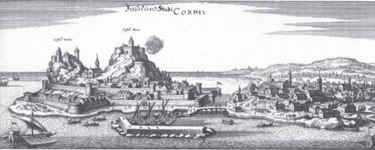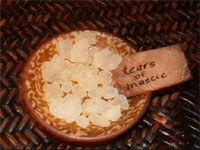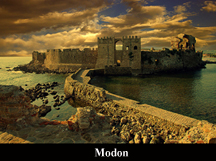 While the war entered into a
period of stalemate, the fleet was not idle. It was still harassing Angevin shipping and slowly expanding Aragonese control in
Calabria and
the Basilicate. In July 1292, the fleet set out on one of the most
spectacular raids of the century (For more about this raid and its results see:
The Art of Raiding article). The operation had been in the planning
stages for at least 2 years and had involved scouting missions. What was
planned was no less than a raid on Greece and the Aegean Sea.
While the war entered into a
period of stalemate, the fleet was not idle. It was still harassing Angevin shipping and slowly expanding Aragonese control in
Calabria and
the Basilicate. In July 1292, the fleet set out on one of the most
spectacular raids of the century (For more about this raid and its results see:
The Art of Raiding article). The operation had been in the planning
stages for at least 2 years and had involved scouting missions. What was
planned was no less than a raid on Greece and the Aegean Sea.
After raiding Apulia in early July, the fleet struck the
County of Cephalonia and Corfu
(picture of Corfu in 15th Century) in Western
Greece on July 14th and was paid a ransom by the Angevins to go
away. The fleet then dashed to the Aegean Sea where it captured the city
of Malvasia and forced it to ransom itself. The fleet went on to raid the
Cyclades Islands and finally captured the island of Chios on August 25th
and the primary target of the operation, the rich
horde of mastic resin (left). The fleet then returned
to Sicily, but not before it attacked the important Venetian naval base at Modon. Unlike the other cities, Modon refused the demand
for ransom and was sacked. The surviving nobility was taken back to Messina and later
ransomed. However before returning home, the fleet stopped at Clarenza on
Venetian naval base at Modon. Unlike the other cities, Modon refused the demand
for ransom and was sacked. The surviving nobility was taken back to Messina and later
ransomed. However before returning home, the fleet stopped at Clarenza on
 the west coast of Greece and looted a number of ships there, including one
of the influential Spinola family of Genoa. By the time the fleet returned
it had amassed enough loot to fund the fleet for an entire year.
the west coast of Greece and looted a number of ships there, including one
of the influential Spinola family of Genoa. By the time the fleet returned
it had amassed enough loot to fund the fleet for an entire year.
Roger and the fleet had managed to assault the interests of virtually every major naval power in the Mediterranean in the course of the summer. What is of interest is that there were virtually no repercussions from these raids. Most of the discussions concerning the later Treaty of Anagni have focused on what drove James II to finally agree to it. However, without peace Charles and the Regno faced the continued predations of Roger and the fleet, which could not have been a particularly welcomed prospect.


